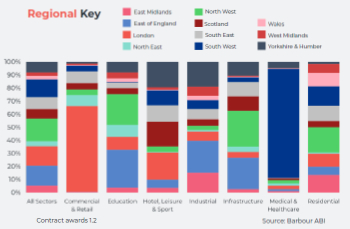Find a plot
Contents |
[edit] Introduction
With land for building in increasingly short supply, one of the biggest obstacles for self-builders is finding a site in the right area and at the right price. Although some self-builders may be willing to be flexible when it comes to location, they will often be up against other self-builders, small builders and full-time land finders which may make the search more problematic.
The following is a list of points to bear in mind when searching for a plot for that dream home:
[edit] Research the area, even if it is close by
Gathering as much information as possible about a small chosen area that is deemed desirable is advisable. Analysing aerial photography and large-scale maps might reveal potential infill plots, such as large back gardens, waste ground or brownfield sites.
However, as with searches undertaken by solicitors, there are sometimes nasty surprises ready to hit the unwary. For example, discovering that a location has former mine workings.
[edit] Understand what is available
Understanding the different types of plot available is important. Many plots come with planning permission. But there are also plots available that are not advertised and cannot be seen from the road. A plot may be eked out of the garden of an existing property. It therefore pays to be inquisitive and to make enquiries.
Apps such as Streetview or Google maps can help locate hard-to-see plots, especially small plots of land between other properties, and others which may not be immediately apparent.
It is important to keep an open mind: a plot that has a dilapidated property should not be rejected out of hand. It may be possible to demolish the existing building and rebuild from scratch. If the plot is large enough, it might be possible to build two houses on the same plot. The second house could be built at some future time when finances recover.
Talk or write to people in the local community, such as shopkeepers and homeowners, who might have land available that might bring them an unexpected source of revenue.
[edit] Register with a land listing service
Websites such as plotfinder.net list sites on a UK national basis. They can be a good starting point for a search.
Local estate agents may also have some knowledge about land that is available in the area – although some may not be interested in selling land due to the lower commission they receive compared to houses. If possible, estate agents who operate property auctions should be sought out. Subscribing to their catalogue list, usually sent out freely around a month or so before the auction date, is also a good move. It is worth getting to know estate agents, flagging your intentions and contacting them regularly.
[edit] Other techniques
A small ad in the local paper could yield one or two sites worth exploring.
Getting ideas and advice from others who may have already found a plot – and even started to build – is an invaluable learning experience. Consider joining a self-build forum.
Understand how the local planners operate and the sort of properties they have approved for planning. This will give an idea of the styles, materials and scale that they favour. Just because a plot is bought with planning permission does not mean the buyer cannot reapply with a new application featuring a design that caters more to their needs.
It is also important not to have unrealistic expectations in terms of style: plans for a brutalist house are unlikely to be approved in, or on the outskirts of, a rural English village. On the other hand, respecting the local vernacular in terms of style, scale and materials is likely to be viewed more sympathetically.
In addition, looking out for plots that have only recently been granted planning permission may pay dividends as it will allow an early offer to be made to the vendor, possibly beating the rest of the field.
Compromise is key when seeking a plot. Rather than sticking to pre-conceived ideas of how the ideal plot should be, self-builders should make a list of the attributes that are really essential to them. Considering less popular areas could bring a few unexpected surprises.
Be aware that there are a number of scams that attempt to exploit people looking for self-build plots. Always keep in mind the phrase ‘buyer beware’. If it sounds too good to be true, then it probably is.
[edit] Related articles on Designing Buildings
- Building an extension.
- Building regulations.
- CDM for self-builders and domestic clients.
- Community infrastructure levy.
- Community right to build.
- Custom-build homes.
- How to build a garage.
- Kit house.
- Localism Act.
- National Planning Policy Framework.
- Neighbourhood planning.
- Open source architectural plans for modular buildings.
- Planning permission.
- Plot.
- Right to build.
- Self-build and Custom Housebuilding Bill 2014-15.
- Self build and custom housebuilding registers.
- Self-build home project plan.
- Self-build homes negotiating discounts.
- Self-build initiative.
- Serviced plot.
- Statutory permissions.
- Types of building.
- VAT refunds on self-build homes.
Featured articles and news
CLC and BSR process map for HRB approvals
One of the initial outputs of their weekly BSR meetings.
Building Safety Levy technical consultation response
Details of the planned levy now due in 2026.
Great British Energy install solar on school and NHS sites
200 schools and 200 NHS sites to get solar systems, as first project of the newly formed government initiative.
600 million for 60,000 more skilled construction workers
Announced by Treasury ahead of the Spring Statement.
The restoration of the novelist’s birthplace in Eastwood.
Life Critical Fire Safety External Wall System LCFS EWS
Breaking down what is meant by this now often used term.
PAC report on the Remediation of Dangerous Cladding
Recommendations on workforce, transparency, support, insurance, funding, fraud and mismanagement.
New towns, expanded settlements and housing delivery
Modular inquiry asks if new towns and expanded settlements are an effective means of delivering housing.
Building Engineering Business Survey Q1 2025
Survey shows growth remains flat as skill shortages and volatile pricing persist.
Construction contract awards remain buoyant
Infrastructure up but residential struggles.
Home builders call for suspension of Building Safety Levy
HBF with over 100 home builders write to the Chancellor.
CIOB Apprentice of the Year 2024/2025
CIOB names James Monk a quantity surveyor from Cambridge as the winner.
Warm Homes Plan and existing energy bill support policies
Breaking down what existing policies are and what they do.
Treasury responds to sector submission on Warm Homes
Trade associations call on Government to make good on manifesto pledge for the upgrading of 5 million homes.
A tour through Robotic Installation Systems for Elevators, Innovation Labs, MetaCore and PORT tech.
A dynamic brand built for impact stitched into BSRIA’s building fabric.
BS 9991:2024 and the recently published CLC advisory note
Fire safety in the design, management and use of residential buildings. Code of practice.























